Affiliate disclosure: This post may contain affiliate links. Please see our Privacy Policy.
Chokecherry syrup is a simple way to preserve chokecherries with minimal effort. No need to pit the fruit, just extract the juice, add sugar, and enjoy. This simple wild fruit syrup will keep in the refrigerator a few weeks, but canning is recommended for long term storage.
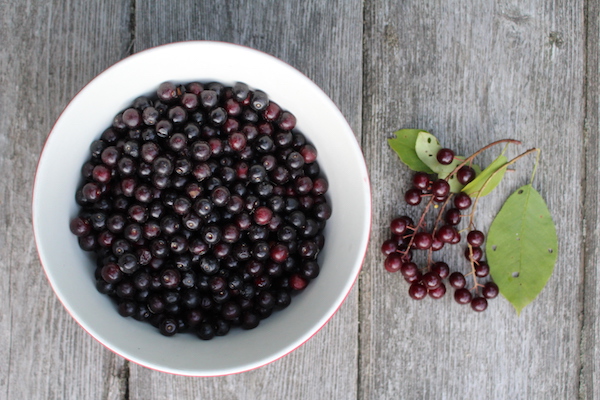
Wild chokecherries (Prunus virginiana) have spectacular flavor, and when picked dead ripe they’re just barely sweet enough to eat fresh. It’s tricky though because the bears and raccoons often pick the shrubs clean well before they reach the “sweet” stage.
A simple homemade chokecherry syrup is a great way to enjoy their flavor, supplemented with a little sweetness to balance out the flavor.
As with any wild food, make sure you’re completely sure about your chokecherry identification before you begin making chokecherry syrup.
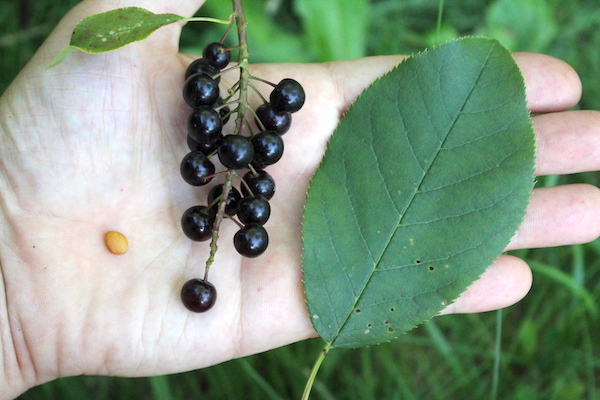
Their closest look-alike is wild black cherry, which is also edible, but I’ve seen people misidentify all manner of wild berry for implausible toxic fruit. Accidentally harvesting Virginia creeper or wild buckthorn, which have small round dark-colored berries…but plants and growth habits that look nothing like chokecherry.
Make sure you know what you’ve harvested…
How to Make Chokecherry Syrup
The first step to making chokecherry syrup is extracting the juice. Each berry has a large cherry-like pit inside, surrounded by a small film of edible flesh. Historically, the fruits were dried in the sun, which helped denature the cyanide in the pits, and then they added a nut-like crunch as they were eaten whole.
These days, most people prefer to avoid cyanide, even in small doses, and opt to juice chokecherries to remove the potentially problematic pits from the equation altogether.
There are two simple methods for juicing chokecherries ~ cook and strain, or steam juicer.
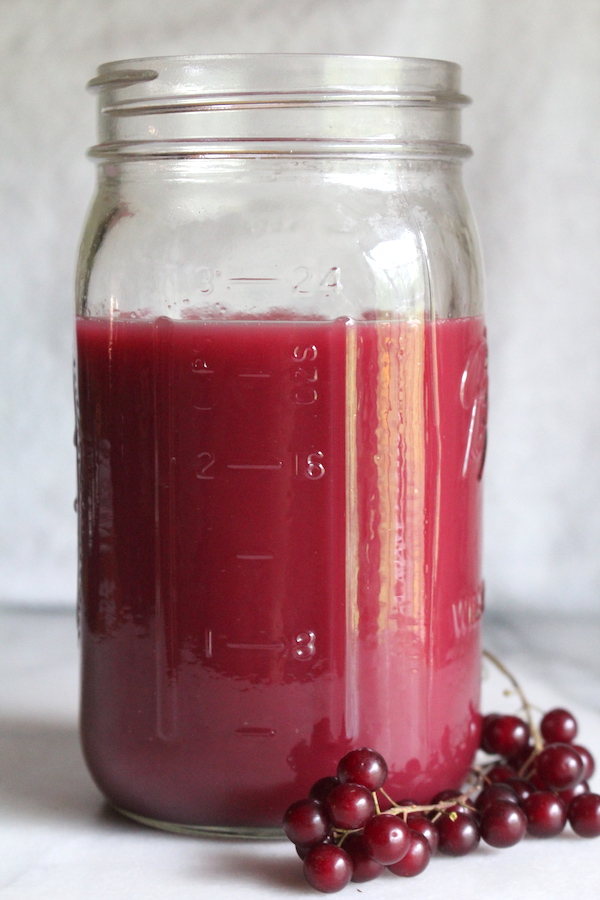
For the cook and strain method, place all the fruit in a saucepan with a bit of water. Simmer it for a few minutes until the fruits have released their juices. Pour the whole mixture through a strainer lined with fine mesh cheesecloth and collect the filtered chokecherry juice.
Alternatively, juice the fruit with a steam juicer. This is my preferred method because it’s cleaner and extracts the most juice possible. I keep a steam juicer on hand for making cherry wine and blackcurrant jelly earlier in the season, and then I pull it out again for chokecherry syrup.
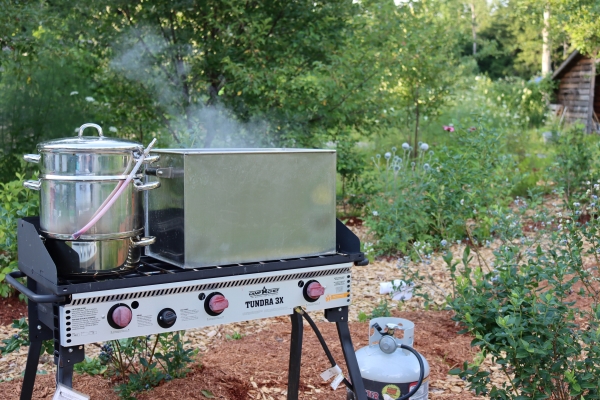
Regardless of the method you choose, measure the resulting juice. Chokecherries can vary widely in their juice yield, and I often get a bit over a cup of juice from a pound of fruit. I’ve seen others reporting an average of 2 cups per pound. Maybe they’re juicier in other parts of the country?
It doesn’t much matter, you have the fruit you’ve found, and every chokecherry shrub is a bit different. Measure your juice and add 1/2 cup to 1 cup of sugar for every cup of juice.
Personally, I like less sugar, so I can taste the fruit more. A standard “simple syrup” uses a 1:1 ratio, and that’s what you’ll likely want if you’re using this chokecherry syrup to make fancy cocktails. The total amount of sugar to juice is really up to you and your tastes.
Of course the sweeter (and riper) the fruit, the less sugar you should need.
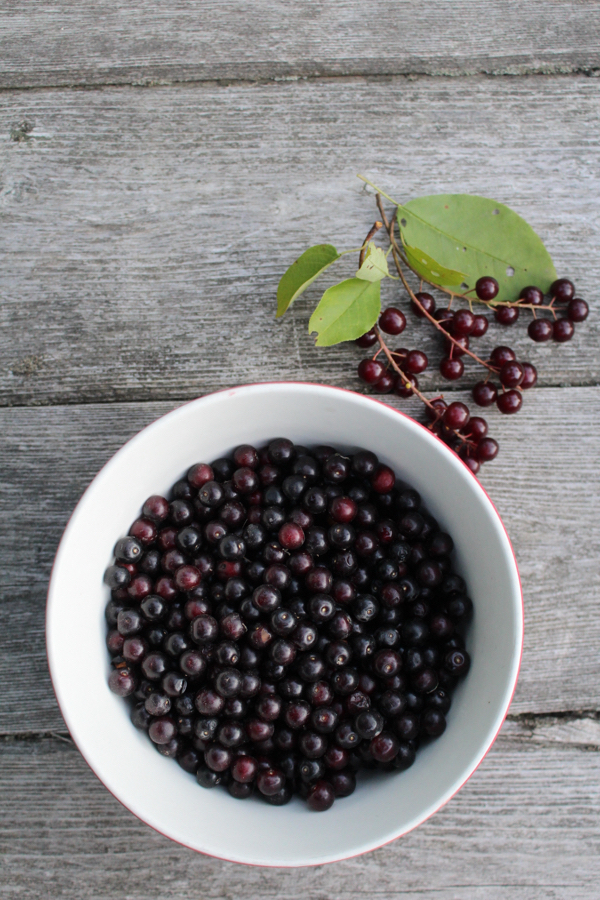
Mix the sugar and strained chokecherry juice, bringing the mixture to a boil for just a minute or two to dissolve the sugar. Once the sugar is dissolved and the mixture has boiled, remove from heat.
Chokecherries actually have a good bit of pectin, and your syrup will thicken into chokecherry jelly before you know it. Once it’s cooled, give it a taste.
If you’d like a thicker syrup, continue cooking it to get it to “gel” a slight bit with the natural pectin. You can also add more sugar which will thicken it as well as sweeten your syrup if it’s not to your tastes.
Once it’s how you like it, pour it into jars and it’s ready to use (or can for longer preservation).
Canning Chokecherry Syrup
Simple syrups can (and will) spoil if left at room temperature for more than a few days. In the fridge, it’ll last a few weeks. Canning is the best way to ensure your chokecherry syrup lasts, and your work doesn’t go to waste.
Chokecherries are naturally acidic enough for canning, and you could just water bath can chokecherry juice without any added sugar if you choose.
Adding sugar makes it easier to use later on, and I love pulling a ready to use jar of chokecherry syrup off the shelf for a batch of mid-winter wild pancakes.
If canning chokecherry syrup for long term preservation, choose quarter pint, half-pint or pint mason jars. Fill the jars with prepared syrup, leaving 1/4 inch headspace.
Seal with 2 part canning lids and process the jars in a water bath canner. The times are 10 minutes for quarter and half-pint jars, and 15 minutes for pint jars. (Add 5 minutes to canning times if you’re above 6,000 feet in elevation.)
Remove the jars from the canner and allow them to cool to room temperature on a towel on the counter. After 24 hours, check seals and store any unsealed jars in the refrigerator for immediate use. Sealed jars should maintain quality in the pantry for 12-18 months.
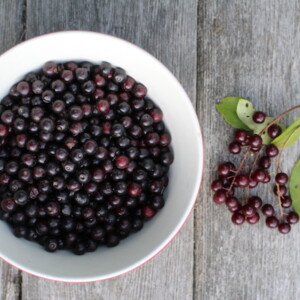
Chokecherry Syrup
Ingredients
- 4 cups chokecherry juice, from about 3 to 4 lbs chokecherries
- 4 cups sugar
- 1 tablespoon lemon juice, optional, for extra brightness
Instructions
- Start by extracting the juice. There are a couple of ways to do this:
- Stovetop: Place chokecherries in a saucepan with a bit of water, then simmer for 5-10 minutes to release the juices. Pour the mixture through a fine mesh strainer or cheesecloth to collect the juice.
- Steam Juicer: If you have a steam juicer, use it to extract the juice. This method yields the most juice and is less messy.
- Once extracted, measure how much juice you have, and for each cup of juice, you’ll add about 1 cup of sugar for every cup of juice. (You can use a bit less if you'd like, down to around 1/2 cup of sugar per cup of juice.)
- Pour the measured juice into a saucepan, then stir in the sugar (use less sugar for a tart syrup or more for a sweeter one).
- Bring the mixture to a boil over medium heat, stirring to dissolve the sugar. Once dissolved, let it boil for another 1-2 minutes.
- As the syrup cools, it will naturally thicken due to the pectin in chokecherries. If you prefer a thicker consistency, you can continue simmering it for a few more minutes until it reaches your desired thickness. Be mindful, though—chokecherry syrup can turn into jelly quickly.
- If canning, pour the hot syrup into sterilized jars, leaving 1/4-inch headspace. Wipe the rims of the jars with a clean cloth and seal with two-part canning lids.
- Process jars in a water bath canner for 10 minutes for quarter and half pint jars, or 15 minutes for pints. (Adding 5 minutes if you're above 6,000 feet in elevation.)
- Allow the jars to cool on a towel at room temperature for 24 hours. Check the seals to ensure they're tight. Unsealed jars should be refrigerated and used immediately.
- Once sealed, store your jars of chokecherry syrup in a cool, dark pantry. Sealed jars can be kept for 12-18 months.
Notes
Nutrition
Nutrition information is automatically calculated, so should only be used as an approximation.
Chokecherry Recipes
Looking for more ways to use chokecherries? Try any of these delicious chokecherry recipes…
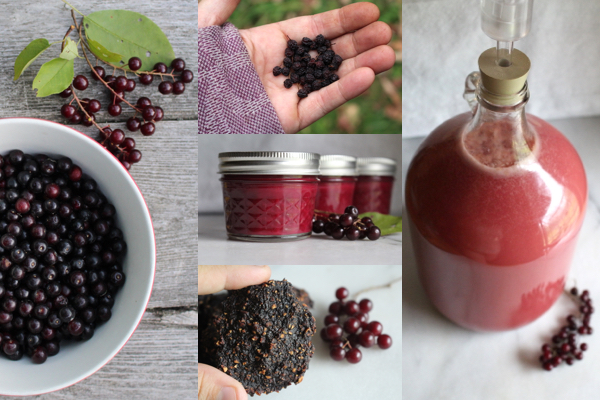
Have other ideas? Let me know what else I should try with these wild-harvested chokecherries in the comments below.
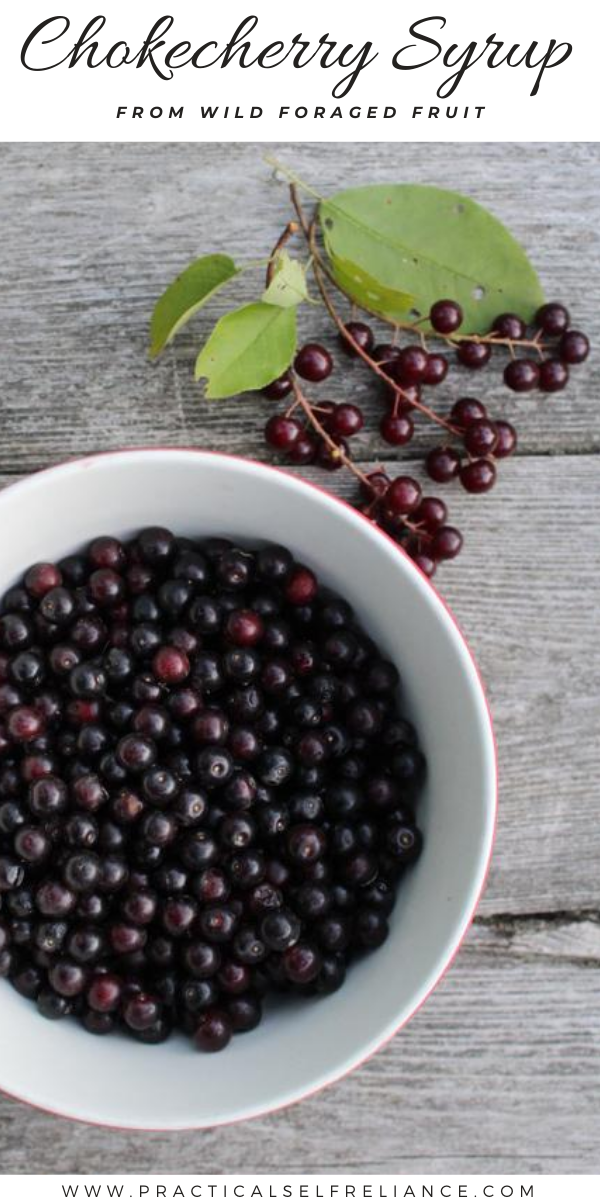
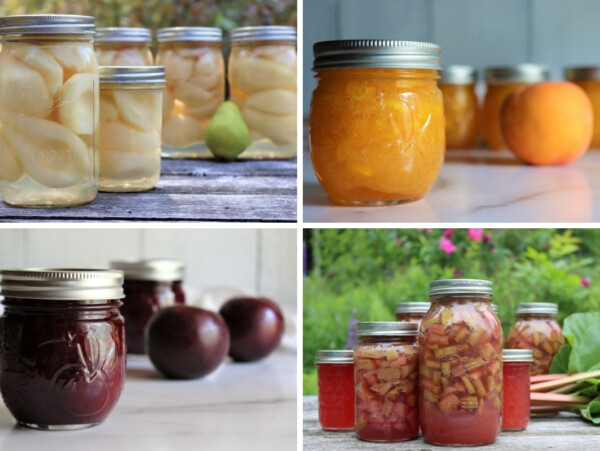
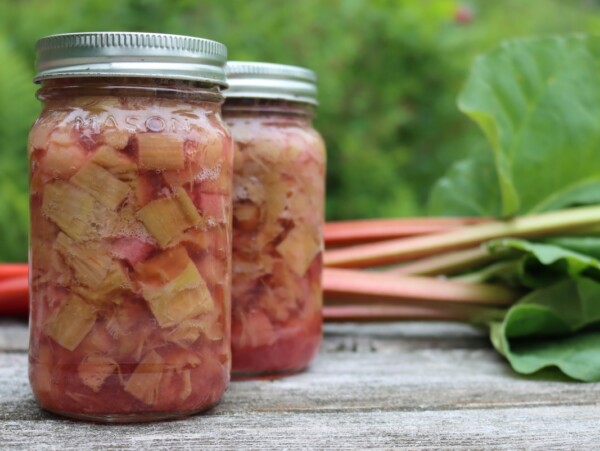
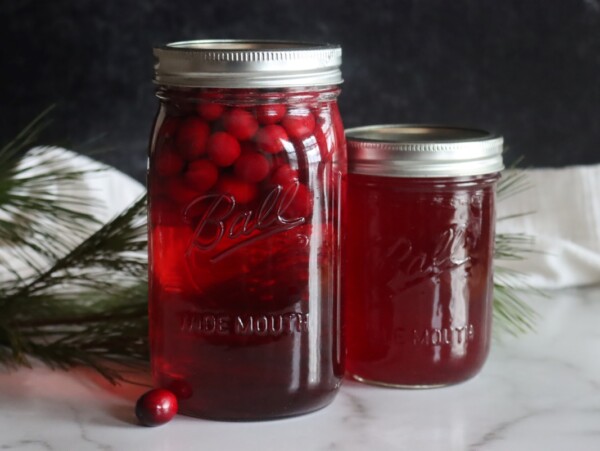
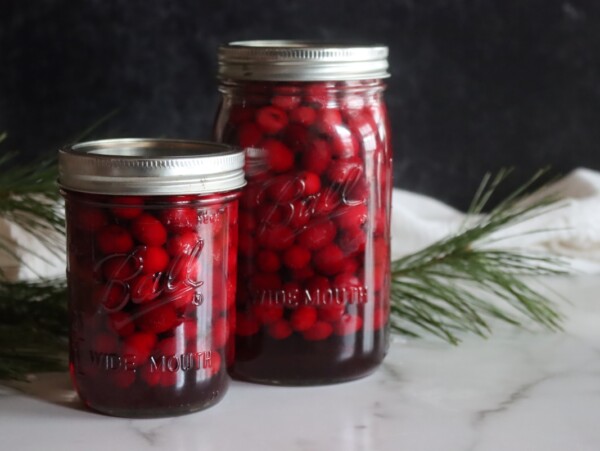
Can I substitute Aronia aka chokeberries in this recipe?
Yes, that should work just fine.
Is there a reason you don’t recommend using quart size jars for the syrup?
There aren’t any tested recipes available for canning quarts of syrup that I am aware of. You would want to find a tested recipe that can give you the appropriate processing time for that size jar.
Great instructions! However I did have a couple of batches that didn’t quite gel (operator error). Can I just combine the un-gelled ones and re-can them as syrup? Thanks!
Yep, you sure can.
Chokecherry ice cream is fabulous! You can use syrup or plain juice – if syrup, lower the sugar content in your ice cream base, if you use juice, keep the sugar content the same so it’s still sweet. 😀
Hi there! Will the syrup freeze? I was thinking of freezing it in ice cube trays and using for cocktails. Thoughts?
Good question. I think it likely has too much sugar to actually freeze, though that’s a guess, but you could just freeze the juice in ice cube trays (then add simple syrup to the cocktail).
That’s what I did! ☺️ Thank you!!!
This is the only syrup recipe I have found on your site. Can I use the same basic recipe for making mixed berry syrup or berry compote (syrup with fruit in it) to water bath can? I would be using a mix of blueberries, blackberries and possibly strawberries. Thank you so much!!
Yes, that would work fine for canning. Any high acid berry that’s approved for canning can be made into a syrup and canned. Be careful, some fruits seem high acid but aren’t acidic enough for canning. Mangoes, Asian pears, cantaloupe, and white peaches, for example, aren’t acidic enough on their own. Check to make sure the fruit itself can be canned safely without added acidity.